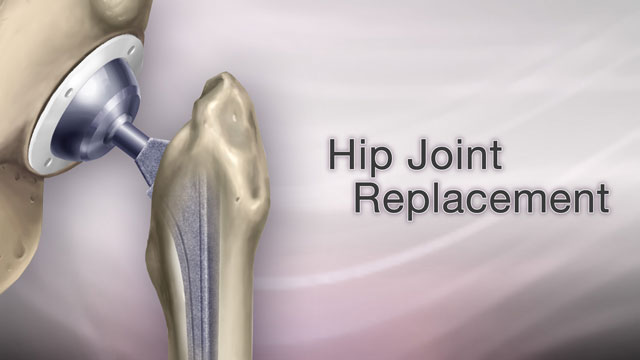Deciding to have knee or hip replacement
There are many things you can do to help decide whether to have knee or hip replacement surgery or not. These may include reading about the operation and talking to others with knee or hip problems.

A key step is talking to your health care provider about your quality of life and goals for surgery.
Surgery may or may not be the right choice for you. Only careful thought can help you make a decision.

The most common reason to have a knee or hip replaced is to provide relief from severe arthritis pain that limits your activities. Your provider may recommend replacement surgery when:
- Pain prevents you from sleeping or doing normal activities.
- You cannot move around by yourself and have to use a cane or walker.
- You cannot safely care for yourself due to your level of pain and disability.
- Your pain has not improved with other treatment.
- You understand the surgery and recovery involved.
Some people are more willing to accept the limits knee or hip pain places on them. They will wait until the problems are more severe. Others will want to have joint replacement surgery in order to continue with sports and other activities they enjoy.
Knee or hip replacements are most often done in people who are 60 and older. However, many people who have this surgery are younger. When a knee or hip replacement is done, the new joint may wear out over time. This is more likely to occur in people with more active lifestyles or in those who will likely live longer after surgery. Unfortunately, if a second joint replacement is needed in the future, it may not work as well as the first.
Is There any Harm in Waiting?
For the most part, knee and hip replacement are elective procedures. This means these surgeries are done when you are ready to seek relief for your pain, not for emergency medical reason.
In most cases, delaying surgery should not make joint replacement less effective if you choose to have it in the future. In some cases, the provider may strongly recommend surgery if deformity or extreme wear and tear on the joint affects other parts of your body.
Also, if pain is preventing you from moving around well, the muscles around your joints may become weaker and your bones may become thinner. You may also become weaker as the body cannot exercise with the limited activity. This may prolong your recovery time and limit your outcome if you have surgery at a later date.
Why you may not be Able to Have Replacement Surgery
Your provider may recommend against knee or hip replacement surgery if you have any of the following:
- Extreme obesity (weighing over 300 pounds or 135 kilograms)
- Weak quadriceps, the muscles in the front of your thighs, that can make it very hard for you to walk and use your knee
- Unhealthy skin around the joint
- Previous infection of your knee or hip
- Previous surgery or injuries that do not allow for a successful joint replacement
- Heart or lung problems, which make major surgery more risky
- Unhealthy behaviors such as excessive alcohol drinking, smoking, drug use, or high risk activities
- Other health conditions that may not allow you to recover well from joint replacement surgery
References
Ferguson RJ, Palmer AJ, Taylor A, Porter ML, Malchau H, Glyn-Jones S. Hip replacement. Lancet. 2018;392(10158):1662-1671. PMID: 30496081 pubmed.ncbi.nlm.nih.gov/30496081/.
Harkess JW, Crockarell JR. Arthroplasty of the hip. In: Azar FM, Beaty JH, eds. Campbell's Operative Orthopaedics. 14th ed. Philadelphia, PA: Elsevier; 2021:chap 3.
Mihalko WM. Arthroplasty of the knee. In: Azar FM, Beaty JH, eds. Campbell's Operative Orthopaedics. 14th ed. Philadelphia, PA: Elsevier; 2021:chap 7.
Misra D, Kumar D, Neogi T. Treatment of osteoarthritis. In: Firestein GS, Budd RC, Gabriel SE, Koretzky GA, McInnes IB, O'Dell JR, eds. Firestein & Kelley's Textbook of Rheumatology. 11th ed. Philadelphia, PA: Elsevier; 2021:chap 106.
Review Date: 8/12/2023


